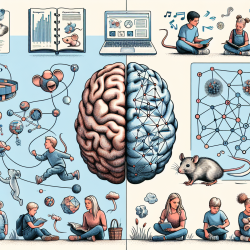Introduction
In the realm of healthcare, the experiences of children and adolescents (CADs) with healthcare professionals (HCPs) are crucial in shaping their overall health outcomes. A recent scoping review and interpretive synthesis titled How do children and adolescents experience healthcare professionals? Scoping review and interpretive synthesis provides valuable insights into how CADs perceive their interactions with HCPs. This blog aims to guide practitioners in enhancing their skills by implementing the findings of this research, ultimately fostering better healthcare experiences for young patients.
Key Findings from the Research
The study synthesized 669 quotations from 99 studies, highlighting CADs' experiences with HCPs. Favorable experiences were characterized by the formation of trusting relationships and involvement in healthcare discussions and decisions. Conversely, unfavorable experiences stemmed from a lack of trust and exclusion from conversations.
Building Trusting Relationships
Trust is a cornerstone of effective healthcare interactions. CADs described trusting relationships as those where they felt a "bond" or "emotional attachment" with HCPs. Trust was fostered by HCPs who were personable, sincere, and relatable. Practitioners can enhance trust by:
- Being transparent and honest in their communication.
- Demonstrating empathy and understanding towards CADs' feelings and experiences.
- Taking the time to get to know CADs personally, beyond their medical conditions.
Involving CADs in Healthcare Discussions
Involvement in healthcare decisions empowers CADs and improves their healthcare experiences. The research found that CADs valued being included in conversations and having their opinions respected. Practitioners can promote involvement by:
- Using age-appropriate language and explanations.
- Encouraging CADs to ask questions and express their preferences.
- Collaborating with CADs and their families to make informed decisions.
Challenges and Opportunities for Practitioners
Despite the clear benefits of trust and involvement, practitioners often face challenges in implementing these principles. Time constraints, communication barriers, and differing expectations between CADs and their families can hinder effective interactions. However, these challenges also present opportunities for growth and improvement. Practitioners are encouraged to:
- Reflect on their communication styles and seek feedback from CADs and their families.
- Participate in training programs focused on child-centered communication strategies.
- Engage in further research to explore innovative ways to enhance CADs' healthcare experiences.
Conclusion
The findings from the scoping review underscore the importance of trust and involvement in CADs' healthcare experiences. By adopting a child-centered approach, practitioners can create a supportive environment that empowers young patients and improves their health outcomes. For those interested in delving deeper into this research, the original paper is accessible through the following link: How do children and adolescents experience healthcare professionals? Scoping review and interpretive synthesis.










